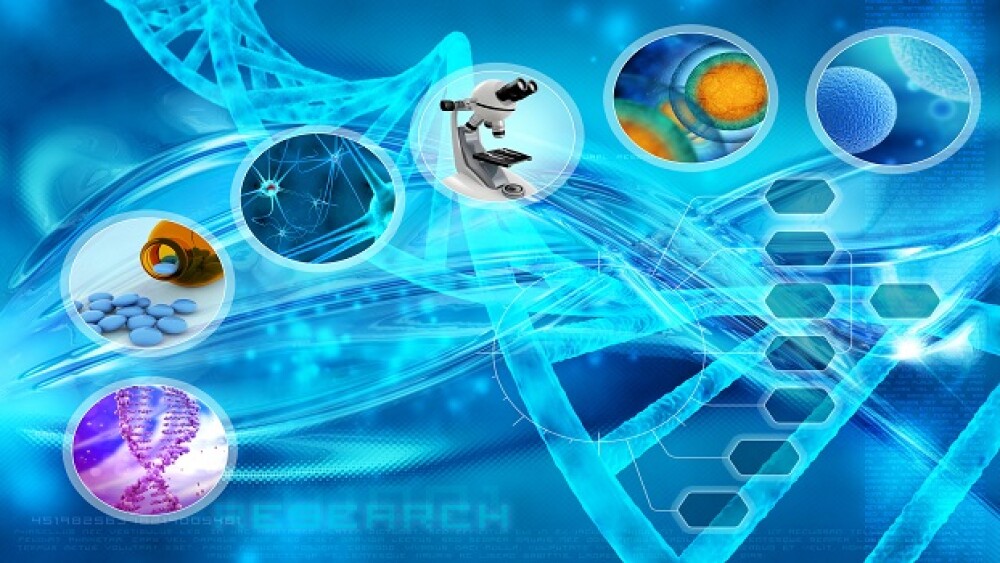There are plenty of great scientific research stories out this week. Here’s a look at just a few of them.
There are plenty of great scientific research stories out this week. Here’s a look at just a few of them.
Using environmental DNA (eDNA) to Find the Loch Ness Monster
Researchers from the University of Otago, New Zealand are set to hunt the Loch Ness Monster next month. They will sample the eDNA of the loch to identify DNA remnants, which will be analyzed to identify a list of all living thing in the loch. Neil Gemmell, who leads the efforts, is skeptical that they will find evidence of “Nessie,” and is focused on more than that. “Large fish like catfish and sturgeons have been suggested as possible explanations for the monster myth,” Gemmel said in a statement, “and we can very much test that idea and others. While the prospect of looking for evidence of the Loch Ness monster is the hook to this project, there is an extraordinary amount of new knowledge that we will gain from the work about organisms that inhabit Loch Ness—the UK’s largest freshwater body.”
Nowhere near as exciting, he expects they will document new specifies of bacteria, as well as invasive species recently observed in the loch, including the Pacific pink salmon. eDNA sampling has been used as a tool for monitoring sharks, whales, fish and other animals.
Exposure to Endocrine-Disrupting Chemicals May Increase Risk of Multigenerational Neurodevelopmental Issues Like ADHD
Researchers at Columbia University Mailman School of Public Health, Harvard T.H. Chan School of Public Health and Brigham and Women’s Hospital in Boston published an article in JAMA Pediatrics whether pregnant women exposed to diethylstilbestrol (DEB) pass down neurodevelopmental issues for multiple generations. The scientists utilized data in the Nurses’ Health Study II, looking at 47,450 women, to evaluate the effects of diethylstilbestrol and whether grandchildren had increased odds of attention-deficit/hyperactivity disorder. DEB is a synthetic nonsteroidal estrogen classified as an endocrine disruptor. The study did find an increased risk of ADHD in both second and third generations. The authors also point out that humans are exposed daily to endocrine-disrupting chemicals (EDCs) in general, although at lower levels than women who were exposed to EDCs during pregnancy between 1938 to 1971.
Research Links Pesticide Exposure to Parkinson’s Disease
Researchers at the University of Guelph, Ontario, Canada identified a link between two agrochemicals, paraquat and maneb, and Parkinson’s disease (PD). The research was published in The FASEB Journal. They found that low-level exposure of the pesticides disrupts cells similar to the effects of mutations linked to Parkinson’s disease. “People exposed to these chemicals are at about a 250-percent higher risk of developing Parkinson’s disease than the rest of the population,” said Scott Ryan, a professor in the university’s Department of Molecular and Cellular Biology, in a statement.
Paraquat is highly toxic and is used in the U.S. only under strict licensing. It is still one of the most widely used herbicides worldwide, including in Canada, where the study was conducted. It is only used in the U.S. by commercially licensed users. Maneb is used to prevent post-harvest spoilage.
The researchers exposed human stem cells from individuals with Parkinson’s disease who had a mutation in the synuclein gene, which is highly associated with PD risk. It also used normal embryonic stem cells. They used the stem cells to create dopamine-producing neurons and exposed them to the two agrochemicals. People with a predisposition to PD are more affected by low levels of the pesticides.
Link between Tuberculosis and Parkinson’s Disease Discovered
Scientists at the Francis Crick Institute, Newcastle University and GlaxoSmithKline published research in The EMBO Journal that identified mechanisms that show Parkinson’s disease and tuberculosis have similarities. A mutation in the gene LRRK2 is the most common mutation in PD patients. Drugs that block an overproduction of LRRK2 protein have shown promise in treating PD. The researchers studied LRRK2 activity in macrophages, a type of immune cell, in patients infected with Mycobacterium tuberculosis. The insight gained may show a potential cause of PD.
“We think that this mechanism might also be at play in Parkinson’s disease, where abnormal masses of protein called ‘Lewy bodies’ build up in neurons in the brain and cause damage, said Susanne Herbet, joint first author and a post-doctoral fellow at the Crick Institute, in a statement.
The belief is that overproduction of LRRK2 might prevent immune cells in the brain from degrading cell debris the way it’s supposed to, which leads to a build-up of protein in the neurons. As a result, it’s possible that anti-TB drugs may have applications in PD patients. It would also seem to have some relevance to Alzheimer’s as well, which is caused by a build-up of a different type of protein in the brain.
Can a Nicotine-related Pathway Be a Biochemical Trigger for Weight Loss?
Researchers at American University and the University of Michigan identified a key signaling pathway that stimulates beige fat cells to burn energy. The research was published in Nature Medicine. Conducted on mice, it identified the brian receptor called the CHRNA2 signaling pathway. The research provided insights into how the body’s immune system communicated with beige fat cells, which may have potential for developing drugs to tackle obesity. It may also have implications in the links between smoking and weight loss.
“This is a very exciting discovery for this pathway,” said Alexander Zestos, a bioanalytical neurochemist with American University, in a statement. “Until recently, we thought this pathway primarily existed in brain cells, the neuromuscular junction, and affected neuronal signaling, and we didn’t know it was prevalent in certain fat cells. It raises all sorts of new questions. Is it the density of the receptors that a person has, or is it the way the receptors are activated, that contributes to one’s ability to gain or lose weight? What is the connection between smoking and weight loss or weight gain?”
So-called “beige” fat cells are a fairly recent discovery. They help organisms defend against severe cold, where they are made by brown fat, mixing with small amounts of white fat. “Brown” fat is “good” fat because it burns energy and protects against excessive weight gain.





